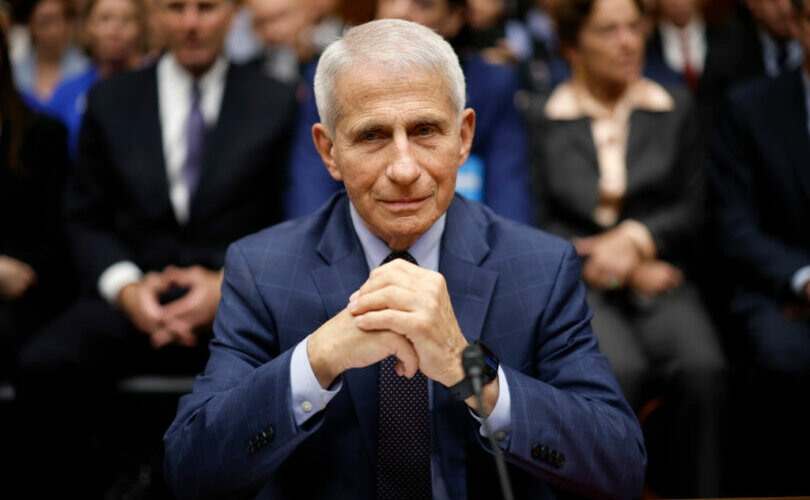Alberta
Watch: Province advising all large gatherings (over 250 people) in Alberta to cancel until further notice

Update on COVID-19 in Alberta
Alberta is adopting aggressive new public health measures to help limit the spread of the novel coronavirus, officially known as COVID-19.
Effective immediately, the Alberta government is asking all large gatherings or international events in the province to be cancelled and advising Albertans against travel outside of the country.
Four new cases of COVID-19 have now been confirmed in Alberta, bringing the total number in the province to 23, all travel-related. One patient continues to recover in hospital, while all others are in isolation at home.
“We are doing everything possible to limit the spread of COVID-19 in our province. The virus is spreading rapidly and is now a global threat. We are implementing these new measures to slow its spread and limit the risks in the weeks ahead. Protecting the health of Albertans is, and always will be, our top priority.”
“The coming weeks are vital in our fight to protect Alberta from COVID-19. These are serious steps, and ones we do not take lightly. I am calling on every Albertan and organization to assist our public health efforts and do their very best to comply with the public health guidance. It is critical that Albertans come together to do our part in keeping Albertans healthy and safe.”
New public health restrictions
Alberta is asking organizers to cancel any events that have more than 250 attendees. This includes large sporting events, conferences and community events. It does not extend to places of worship, grocery stores, airports or shopping centres.
Any event that has more than 50 attendees and expects to have international participants, or involves critical infrastructure staff, seniors, or other high-risk populations should also be cancelled.
Events that do not meet these criteria can proceed, but risk mitigation must be in place, such as sanitizer stations and distancing between attendees.
At this time, schools and daycares can remain open but steps should be taken to ensure that no more than 250 individuals are in the same room at any given time.
Travel outside of the country is not being recommended at this time. Given the rapid global spread of the virus, it is no longer possible to assess health risks for the duration of the trip.
New cases of COVID-19
Four additional cases of COVID-19 have been confirmed in the province. One of the confirmed cases is a two-year-old child from the Calgary zone who is now recovering at home.
The child who has tested positive for COVID-19 returned with their family from a vacation in Florida and developed mild symptoms once in Alberta. The child attended a local daycare from March 2-6 and tested positive on March 11.
The child is expected to make a full recovery.
As soon as the case tested positive, health officials took immediate action to protect the health of Albertans. On the advice of Alberta Health Services, the daycare has temporarily closed to limit exposure to the virus. All close contacts are self-isolating for 14 days while being monitored by health officials.
Any Albertan who has not been contacted directly by Alberta Health Services is not at risk.
The other three newly confirmed cases involve a woman in her thirties, a male in his fifties, and a woman in her seventies. They are all from the Calgary zone.
The travellers returned from travelling in Jordan, Egypt, France, Germany, and the United States, specifically Florida.
All Albertans are encouraged to visit alberta.ca/COVID19 for the latest information, guidance and resources.
Alberta
Alberta takes big step towards shorter wait times and higher quality health care

From the Fraser Institute
On Monday, the Smith government announced that beginning next year it will change the way it funds surgeries in Alberta. This is a big step towards unlocking the ability of Alberta’s health-care system to provide more, better and faster services for the same or possibly fewer dollars.
To understand the significance of this change, you must understand the consequences of the current (and outdated) approach.
Currently, the Alberta government pays a lump sum of money to hospitals each year. Consequently, hospitals perceive patients as a drain on their budgets. From the hospital’s perspective, there’s little financial incentive to serve more patients, operate more efficiently and provide superior quality services.
Consider what would happen if your local grocery store received a giant bag of money each year to feed people. The number of items would quickly decline to whatever was most convenient for the store to provide. (Have a favourite cereal? Too bad.) Store hours would become less convenient for customers, alongside a general decline in overall service. This type of grocery store, like an Alberta hospital, is actually financially better off (that is, it saves money) if you go elsewhere.
The Smith government plans to flip this entire system on its head, to the benefit of patients and taxpayers. Instead of handing out bags of money each year to providers, the new system—known as “activity-based funding”—will pay health-care providers for each patient they treat, based on the patient’s particular condition and important factors that may add complexity or cost to their care.
This turns patients from a drain on budgets into a source of additional revenue. The result, as has been demonstrated in other universal health-care systems worldwide, is more services delivered using existing health-care infrastructure, lower wait times, improved quality of care, improved access to medical technologies, and less waste.
In other words, Albertans will receive far better value from their health-care system, which is currently among the most expensive in the world. And relief can’t come soon enough—for example, last year in Alberta the median wait time for orthopedic surgeries including hip and knee replacements was 66.8 weeks.
The naysayers argue this approach will undermine the province’s universal system and hurt patients. But by allowing a spectrum of providers to compete for the delivery of quality care, Alberta will follow the lead of other more successful universal health-care systems in countries such as Australia, Germany, the Netherlands and Switzerland and create greater accountability for hospitals and other health-care providers. Taxpayers will get a much better picture of what they’re paying for and how much they pay.
Again, Alberta is not exploring an untested policy. Almost every other developed country with universal health care uses some form of “activity-based funding” for hospital and surgical care. And remember, we already spend more on health care than our counterparts in nearly all of these countries yet endure longer wait times and poorer access to services generally, in part because of how we pay for surgical care.
While the devil is always in the details, and while it’s still possible for the Alberta government to get this wrong, Monday’s announcement is a big step in the right direction. A funding model that puts patients first will get Albertans more of the high-quality health care they already pay for in a timelier fashion. And provide to other provinces an example of bold health-care reform.
Alberta
Alberta’s embrace of activity-based funding is great news for patients

 From the Montreal Economic Institute
From the Montreal Economic Institute
Alberta’s move to fund acute care services through activity-based funding follows best practices internationally, points out an MEI researcher following an announcement made by Premier Danielle Smith earlier today.
“For too long, the way hospitals were funded in Alberta incentivized treating fewer patients, contributing to our long wait times,” explains Krystle Wittevrongel, director of research at the MEI. “International experience has shown that, with the proper funding models in place, health systems become more efficient to the benefit of patients.”
Currently, Alberta’s hospitals are financed under a system called “global budgeting.” This involves allocating a pre-set amount of funding to pay for a specific number of services based on previous years’ budgets.
Under the government’s newly proposed funding system, hospitals receive a fixed payment for each treatment delivered.
An Economic Note published by the MEI last year showed that Quebec’s gradual adoption of activity-based funding led to higher productivity and lower costs in the province’s health system.
Notably, the province observed that the per-procedure cost of MRIs fell by four per cent as the number of procedures performed increased by 22 per cent.
In the radiology and oncology sector, it observed productivity increases of 26 per cent while procedure costs decreased by seven per cent.
“Being able to perform more surgeries, at lower costs, and within shorter timelines is exactly what Alberta’s patients need, and Premier Smith understands that,” continued Mrs. Wittevrongel. “Today’s announcement is a good first step, and we look forward to seeing a successful roll-out once appropriate funding levels per procedure are set.”
The governments expects to roll-out this new funding model for select procedures starting in 2026.
* * *
The MEI is an independent public policy think tank with offices in Montreal, Ottawa, and Calgary. Through its publications, media appearances, and advisory services to policymakers, the MEI stimulates public policy debate and reforms based on sound economics and entrepreneurship.
-

 2025 Federal Election1 day ago
2025 Federal Election1 day agoRCMP memo warns of Chinese interference on Canadian university campuses to affect election
-

 2025 Federal Election1 day ago
2025 Federal Election1 day agoResearchers Link China’s Intelligence and Elite Influence Arms to B.C. Government, Liberal Party, and Trudeau-Appointed Senator
-

 Energy2 days ago
Energy2 days agoTrump signs four executive orders promoting coal industry
-

 COVID-1924 hours ago
COVID-1924 hours agoFauci, top COVID officials have criminal referral requests filed against them in 7 states
-

 Justice2 days ago
Justice2 days agoCanadian government sued for forcing women to share spaces with ‘transgender’ male prisoners
-

 Alberta2 days ago
Alberta2 days agoAlberta takes big step towards shorter wait times and higher quality health care
-

 2025 Federal Election5 hours ago
2025 Federal Election5 hours agoWhat Trump Says About Modern U.S. And What Carney Is Hiding About Canada
-

 Business2 days ago
Business2 days agoStocks soar after Trump suspends tariffs










